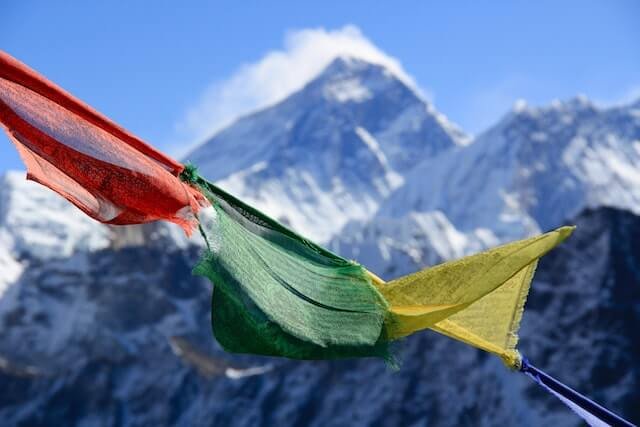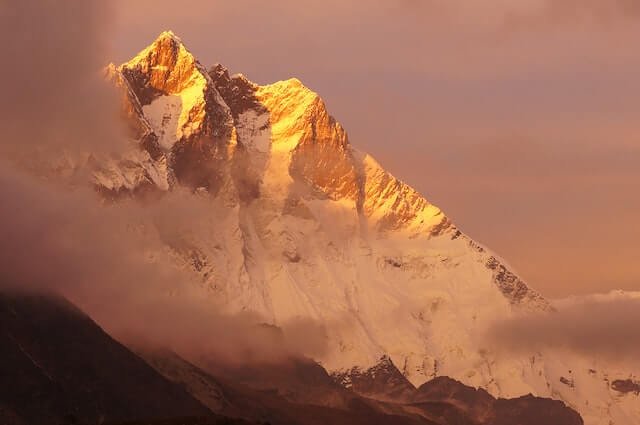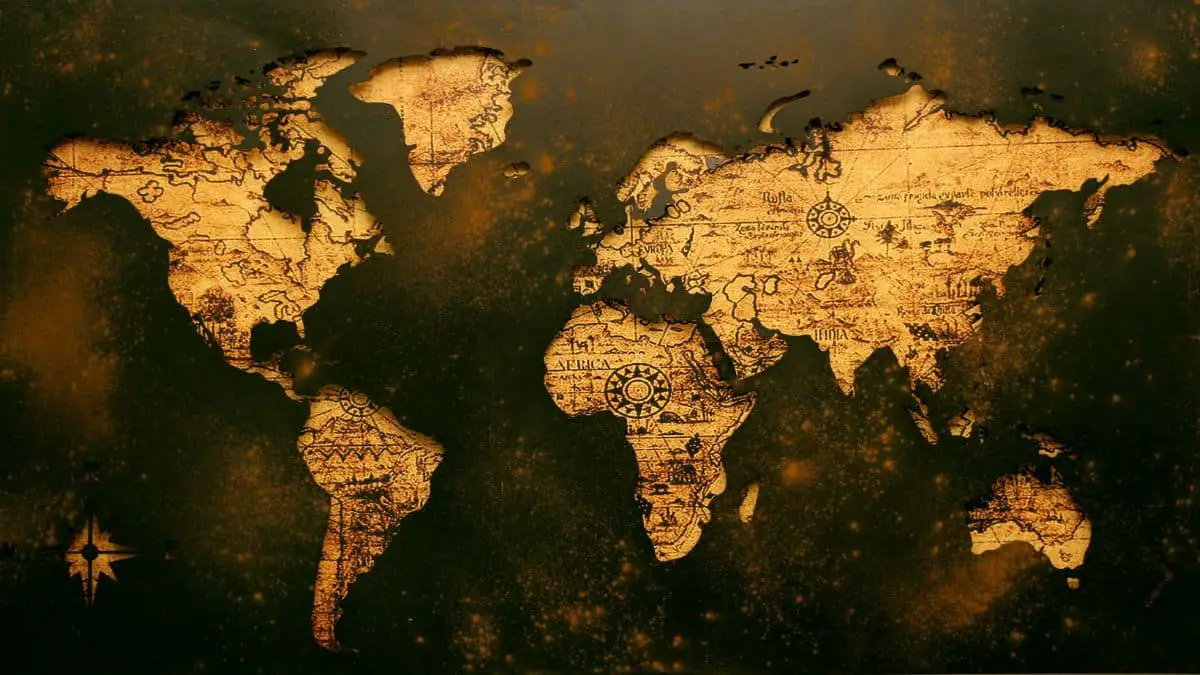Everest is located on the border between Nepal and Tibet, China, also known as the “Roof of the World.” It is known as the world’s highest mountain.
Mount Everest is one of the world’s deadliest mountains due to its harsh cold and low-oxygen environment.
1. Everest has been on the planet for more than 60 million years
When India’s continental plate collided with Asia, the mountain was formed. India’s plate pushed beneath Asia, raising a massive mass of land upwards and forming the world’s highest mountain range, the spectacular Himalayas.
2. Mount Everest is also called Chomolungma or Sagarmatha
Mount Everest is the highest mountain in the Himalayas, located on the border of Nepal and Tibet (China). Mount Everest was named Qomolangma or Chomolungma in Tibetan, which means “mother of the earth.”
In Nepalese, it was known as Sagarmatha, which means “God of the Sky.” It was named after George Everest, a director of the British Surveyor General of India who was in charge of surveying the Himalayas in the nineteenth century.
3. Mount Everest grows about 4 millimeters per year
The Himalayas are formed by the uplift of the Eurasian Plate caused by the sliding of the Indian Plate beneath it. Everest grows at a rate of 4 mm (0.2″) per year, or approximately 40 centimeters (16 inches) per century.
4. Mount Everest is NOT the tallest mountain on the Planet Earth
Hawaii’s Mauna Kea, which stands at 10,200 meters (33,500 ft), holds this title. The majority of Mauna Kea, however, is below sea level. Mount Everest is the world’s highest peak above sea level.
5. Mount Everest was climbed for the first time in 1953.
Sir Edmund Hillary of New Zealand and Tenzing Norgay of Nepal made the first ascent of Mount Everest on May 29, 1953.
6. Sherpas are the only people who can ascend Mount Everest without using oxygen.
The Sherpa people have settled on both sides of the Himalayas. Because the Sherpa people live in mountainous areas with thin air, they have inherited a unique physical trait: increased hemoglobin production.
This inherent factor allows them to function well in the low-oxygen environment of the Himalayas.
Sherpas have evolved into the best Mount Everest guides. They not only guide the climbers, but many Sherpas assist with carrying supplies for the climbers, as well as some rescue items, camping equipment, and so on.
Their packs can weigh up to five times as much as those of ordinary climbers! For an expedition, a Sherpa guide can earn up to $5,000 USD.
7. Everest takes approximately 39-40 days to climb
This does not include the time spent trekking to Everest Base Camp, which can take anywhere from 10 to 14 days. The reason it takes so long to summit Everest is so that the body can adjust to the extreme altitude – on the summit, there is only a third of the amount of oxygen available compared to at sea level. Climbers typically use bottled oxygen to help them cope with the effects of high altitude.
8. On Mount Everest, approximately 300 people have died
Everest is the seventh deadliest mountain in the world, with a cumulative death rate of about 2% [2018]. On Mount Everest, dead bodies are common.
When people die while climbing Everest, their bodies are left on the mountain and serve as landmarks for other climbers, as carrying/dragging the dead bodies down is a difficult task due to the physical effort required in the low-oxygen environment.
9. On Mount Everest, tons of human feces have frozen
Campaigners for a cleaner environment Everest estimates that approximately 8,000kg of human feces is left on the mountain each year (at an average of 800 climbers per year, that’s 10 kg per climber), and this is becoming a serious environmental and health problem.
In the permanently frozen higher altitudes, feces does not decompose. Climbers must now carry their feces off the mountain.
Above the lowest base camp, there is no designated toilet area on Mount Everest. Climbers, if they can, pee and poop in their tents… Because of the frozen ground, digging latrines is impractical, and the risk of exposure/frostbite makes excreting in a shelter preferable.
Some climbers bring waste bags and pee bottles to their camps, while others wear diapers.
10. Helicopters cannot reach the summit of Mount Everest
A helicopter can generally reach altitudes of 5,000 meters. The low density of the air at higher elevations, such as Everest’s summit, means that the propellers can no longer achieve lift. Air evacuation is not an option for those on Everest.
High-performance helicopters can reach Everest’s lowest base camps (altitude 5,200 m in China; 5,300 m in Nepal), but this is the most expensive way to get to or from an EBC.
Tenzing-Hillary Airport in Lukla, Nepal is approximately 60 kilometers (40 miles) from Everest. Although Shigatse in Tibet has a civilian airport, most visitors to Everest fly into the much larger Lhasa Gonggar Airport.
11. The movie “Everest” was partially shot on Mount Everest
The film “Everest” is based on the true story of the 1996 mountain disaster. Parts of the action were shot on Everest, in a location in Nepal with an elevation of 4,750 meters, not far from its EBC. The majority of the other scenes were shot in studios.























